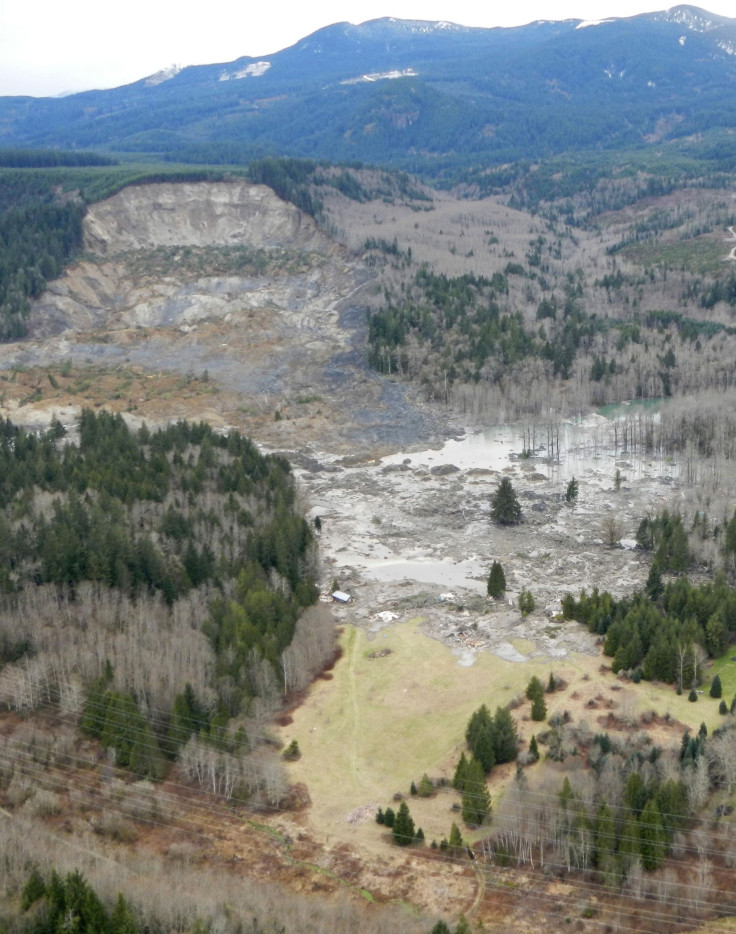UPDATE: Massive Washington Mudslide Kills At Least 8, Destroys Neighborhood and Dams River

Update as of 12:32 a.m. EDT: The death toll in the mudslide has risen to 8, media reports said Sunday night, citing authorities, who reportedly observed that the missing person count, which was earlier reported to include at least 18 people, was "fluid."
"We didn't see or hear any signs of life out there today so of course that's very disappointing to all of our emergency responders here on the scene," Snohomish County Fire District 21 Chief Travis Hots, reportedly said, adding that the entire debris field had not yet been searched and that operations were still in "search and rescue mode. It has not gone to a recovery mode at this time."
The massive mudslide in Snohomish County, Wash., that occurred on Satuday killed three and left 18 more unaccounted. The landslide was at least 135 feet wide and 180 feet deep.
Officials say it destroyed a neighborhood of about 30 homes, blocked State Route 530 and jammed the north fork Stillaguamish River.
The slide occurred just before 11 a.m. on Saturday and moved rapidly. Paulo Falcao was driving on State Route 530 when the slide landed right in front of his car. “I was coming down the hill and I just saw darkness,” Falcao said, “like somebody wants to grab you, and everything was gone.”
More than 100 first responders came to the scene but many had trouble getting into areas where people were likely trapped. Mudslides can hide dangerous debris and the mud has a consistency much like quicksand. It was reported as deep as 60 feet in some areas.
Getting to trapped victims can be near impossible, but first responders said they’re “going to take extreme risks.”
As some resources go to searching for victims, other officials have to worry about the Stillaguamish River. Officials measured 15-20 feet of debris damming the river and water is backing up behind it. If the blockage were to release all at once, it could destroy everything in its path downstream.
The National Weather Service said a catastrophic flooding incident is unlikely but still issued a flash flood warning. Residents and officials aren’t taking any chances. Officials advised people living downstream to evacuate just in case.
“Not knowing when this wall of water is going to come down river, the best thing to do is get your family out of the area,” said Rodney Rochon of the Snohomish County Sheriff’s Department.
Mudslides are different than landslides; the latter is usually caused by a trigger like a boulder falling and can even move as slow as a few inches per year. They’re typically rockier, drier material but can also be saturated with water.
Mudslides, on the other hand, are like a river of debris and muddy earth caused by heavy rains or anything that overloads the ground with water or compromises what holds the earth together, like a wildfire that destroys tree root systems. Mudslides can reach speeds up to 50 mph.
© Copyright IBTimes 2024. All rights reserved.






















